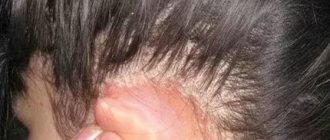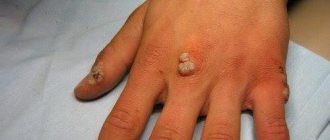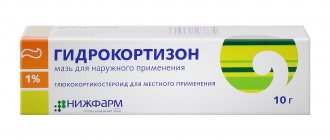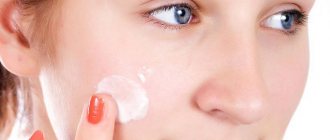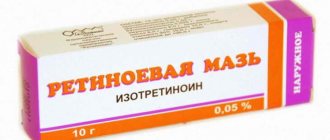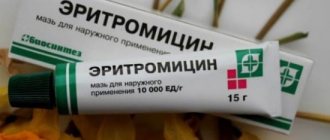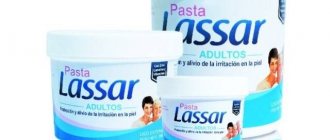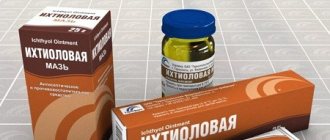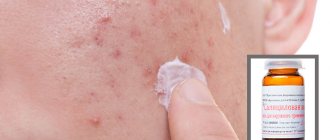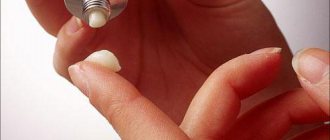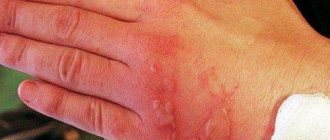Ointments and creams
Ointments are popular remedies for the treatment of skin diseases.
They are applied mainly to the affected areas of the skin and used in courses. They can be divided into:
- Hormonal for extreme severe skin diseases. They have noticeable side effects and are used strictly under medical supervision.
- Non-hormonal ones are usually prescribed first and are intended to combat mild to moderate lesions; if they have side effects, they are minor.
List of ointments
- Naftader. Application: atopic dermatitis, eczema, furunculosis, burns, ulcers and arthralgia. Action: antiseptic, analgesic. Price in rubles: 400-500.
- Protopic is an ointment for the treatment of the following skin diseases: atopic childhood dermatitis, strong anti-inflammatory effect. Does not provoke skin atrophy, it is allowed to be used for children from 2 years of age. Price: 1500 – 1600 rub.
- Losterine. Cream. Application: dermatitis, psoriasis, eczema. Action: strong absorbable, antibacterial, anti-inflammatory, analgesic and antipruritic. Price in rubles: 320-450.
- Radevit. Ointment. Application: eczema, cracks, skin erosions, diffuse neurodermatitis. Action: reparative (restorative), anti-inflammatory, softening. Costs 320 rubles.
- Solcoseryl (Actovegin) is a universal ointment for skin diseases. Application: difficult to heal wounds, abrasions, burns, dermatitis. The drug also activates regenerative and reparative (restorative) processes in the body. Price in rubles: 180 – 300 rubles.
- Exoderil. Cream. Indications: fungus, cutaneous candidiasis, pityriasis versicolor, mycosis, inflammatory dermatomycosis. Costs about 350 rubles.
- Eplan. Cream. Application: psoriasis, ulcer, fissure, microbial eczema, herpes, acne, boils, burns, swelling, itching, dermatitis of various forms, insect bites, also a means of prevention. Price in rubles: 140 – 160.
Hormonal agents:
- Advantan. Ointment, cream, emulsion. Application: microbial, dyshidrotic eczema, all types of adult and childhood dermatitis, neurodermatitis, sunburn. Price: 350 – 400 rub.
- Akriderm - used for all forms of dermatitis (chronic, contact, seborrheic, atopic, etc.), also for eczema, psoriasis and neurodermatitis. Price: 120 rub.
- Fucicort. Cream. Application: contact, seborrheic, atopic and allergic dermatitis, discoid lupus erythematosus, chronic lichen. Costs 380 rubles.
Treatment of skin diseases is complex ; in addition to any of the above remedies, the doctor can also recommend folk remedies, and, if necessary, can recommend consultation with a psychologist or psychotherapist, without excluding medication.
We strongly warn you about the dangers of self-medication.
Laticort ointment is a drug used in the treatment of skin diseases.
The drug is produced not only in the form of an ointment, but also in the form of a cream and solution. All forms of release of this drug contain 0.1% of the active substance - hydrocortisone butyrate. Read the instructions for the drug →
Medical developments over the past decades in the treatment of various dermatological diseases have led to the fact that successful treatment is often based on the use of corticosteroid ointments or creams. One of the frequently used products is Lokoid ointment and its analogues. Features of using the drug→
Skin is the outer covering of the body. Only in its central part are there living cells, and on the outside they are drier. Cells on the surface of the skin are dead; they protect the body from the penetration of harmful substances. How to apply the ointment?→
Hydrocortisone ointment is a medicine for skin diseases intended for external use. The main active ingredient of the ointment is a glucocorticosteroid, which has a decongestant, antipruritic and anti-inflammatory effect, eliminates allergic reactions on the skin. Read the description of the drug→
Combined external preparations of corticosteroids in the treatment of skin diseases
Sokolovsky E.V.
SPbSMU named after. acad. I.P. Pavlova, St. Petersburg
Purpose: to determine the feasibility of using combined external preparations of corticosteroids in various pathological processes.
Materials and methods: study of literature on the effectiveness of the use of combined external preparations in the treatment of skin diseases.
Results: Combination preparations (for example, Akriderm® SK) containing a steroid and salicylic acid have been created specifically for the treatment of patients with psoriasis. The indication for their use is exacerbation of psoriasis. Using Akriderm® SK allows you to quickly achieve good results.
The combined drug Akriderm® GK is a combination of the antimycotic clotrimazole, the antibiotic gentamicin and a strong topical steroid - betamethasone dipropionate. Akriderm® GK is available in the form of a cream. This form is used primarily on smooth skin (if the pathological process is not accompanied by pronounced weeping).
An eczematous reaction is one of the standard pathological skin reactions. It can occur in various diseases (mycoses of the feet and smooth skin, streptoderma, scabies, etc.), in the presence of a genetically predetermined propensity for just such a response of the skin to various influences. As a rule, an eczematous reaction is a manifestation of delayed-type hypersensitivity. Therefore, using only an etiotropic drug can lead to increased skin inflammation. It is in such cases that the use of a combination drug is justified, containing, in addition to the agent acting on the causative agent of the disease, a topical steroid that has a pathogenetic anti-inflammatory effect.
Indications for the use of Akriderm® GK on a cream basis are primarily forms of mycosis of the feet, accompanied by a hyperergic reaction to the presence of the fungus: dyshidrotic and partly intertriginous, as well as eczematized streptoderma or allergic dermatoses, complicated by secondary infection.
Subsequently, antimycotics (for example, Mycozoral® ointment), antibiotics or (rarely) a topical steroid are used for 2-4 weeks. Conclusions: thus, the drug Akriderm® GK occupies a special niche in the practice of a dermatologist. Its use is justified in almost all cases when a hyperergic reaction to the presence of a fungus or bacterial agent develops, as well as an allergic skin lesion complicated by a secondary infection. Prescribing Akriderm® GK allows you to quickly achieve a clinical effect and restore the patient’s performance. ‹ Collost - a biological collagen matrix for the repair of skin damageTopCombined method for the treatment of onychomycosis of the feet ›
What is dermatitis and skin diseases, signs
Poor environment, poor nutrition, hereditary liver and intestinal diseases, immunodeficiency states - these factors provoke the appearance of symptoms of skin diseases.
For example:
- the appearance of redness;
- the occurrence of local irritation;
- swelling in the area of inflammation;
- the presence of flaky areas;
- formation of plaques, pustules, nodes, erosive lesions;
- the appearance of painful sensations;
- increase in body temperature.
Some skin diseases occur due to the aggressive influence of the external environment. Dermatologists name a large number of negative factors that can provoke the onset of a pathological process.
For example:
- exposure to high or low temperatures;
- ultraviolet radiation;
- contact with chemicals;
- insect bites;
- activity of microorganisms and parasites;
- influence of potential allergens.
However, negative agents provoke the onset of the inflammatory process only in the presence of existing autoimmune diseases, malfunctions of internal organs, weakened immunity, and neuropsychiatric disorders. Dermatologists identify a predisposition to the occurrence of skin diseases already in childhood.
Manifestations of diathesis are recorded in 70% of small patients who are bottle-fed. Young mothers first discover flaking, dryness, redness on their children’s skin, then itchy spots and bumps appear, which become infected when scratched, provoking the appearance of a local inflammatory process.
In this case, ointments for dermatitis and skin diseases can be prescribed by a therapist, and in severe cases, by a dermatologist. During the initial examination, the doctor makes a preliminary diagnosis. After laboratory tests of the results of scrapings, smears, blood and urine tests, the doctor’s conclusion is clarified.
Both children and adults suffer from allergic skin diseases. Patients must constantly follow a special diet, periodically undergo preventive treatment, select clothing made from natural fabrics, and use purified hypoallergenic cosmetics.
The most common allergic skin ailments are:
- hives;
- itchy dermatosis;
- atopy;
- eczema;
- contact dermatitis;
- Quincke's edema;
- Lyell's syndrome.
Classification of drugs for dermatitis and skin diseases
Medicines used in dermatology for the treatment of atopy and other inflammatory skin lesions are classified into two large groups according to the method of administration.
They are:
- local remedies;
- systemic drugs.
For successful treatment, an integrated approach is required - ointments, gels and creams will be most effective when taken orally:
- histamine receptor blockers (Zestra, Tavegil, Suprastinex);
- light sedatives and tranquilizers (Persen,
- "Afobazol", "Adaptol");
- prebiotics and probiotics (Normobakt, Bifiform, Probifor);
- vitamin complexes in the absence of allergies to the components of the compositions (B, C, A, E, D);
- enterosorbents (“Polyphepan”, “Enterosgel”, “White Coal”).
If the disease is severe, a dermatologist may prescribe hormonal medications. Initially, local ointments with glucocorticosteroids are used; if there is no therapeutic effect, drugs in tablet form are introduced into the treatment.
Ointments and gels with natural active ingredients used in the treatment of early-stage skin diseases are widely represented on the pharmaceutical market. They will help cope with urticaria, dermatitis or mild eczema.
What are they?
It is worth understanding that ointments can have a variety of effects on the skin and the body as a whole. It is important to choose the right drugs depending on the cause of the pathological process:
- For bacterial skin diseases are used for infections caused by bacteria. These drugs should be distinguished from antiviral and antifungal ointments, which do not act against other pathogens.
- Hormonal drugs are used to treat dermatitis, eczema, psoriasis and other skin diseases of an autoimmune nature. They are also used to relieve skin allergy symptoms.
- Healing ointments contain components that allow the skin to regenerate. They can be used for burns and injuries, and for healing postoperative wounds.
These three groups of products cannot combine all ointments. There are also specific drugs that are used to treat specific conditions:
Let's talk about each group of funds in more detail.
Antibiotics for skin treatment
Therapeutic ointments with an antibacterial effect have a wide variety of compositions. Unlike tablets, they are sold without a prescription but are not safe. You should consult a specialist to choose the right drug for your specific situation.
Names of popular antibacterial ointments:
- Levomekol and Levosin contain chloramphenicol, which is an effective drug for the treatment of many bacterial infections.
- Tetracycline ointment contains a drug of the same name, which is not recommended for systemic use, but is actively used for skin and eye diseases.
- Zinerit and erythromycin ointment contain the macrolide erythromycin. It acts on intracellular pathogens, therefore it is used not only for the treatment of acne, but also for chlamydia. In addition, the drug is used in pediatric practice.
The medicine is chosen depending on the sensitivity of the bacteria to a particular drug.
Broad spectrum
Antibiotics with a wide spectrum of antimicrobial activity are considered a separate category of drugs. Among these drugs are the following:
These medications are selected by the physician before the culture is obtained to cover a wide range of bacteria.
Features of antibiotic therapy
There are some specifics about how to treat with antibacterial drugs:
- It is recommended to consult a doctor before use.
- Do not use the medicine without consulting a specialist for more than 7 days.
Antiviral and antifungal
Do not confuse antibiotics with other drugs used to treat infections.
For microsporia, candidiasis and other fungal skin lesions, the following ointments are used:
- Nystatin has particular activity against fungi of the genus Candida, therefore it is used for skin thrush.
- Clotrimazole is a drug used to treat a wide variety of fungal skin infections. Has pronounced activity.
- Terbinafine is available as an ointment called Terbizil. Used for microsporia and candidiasis.
- Exoderil - this drug has the greatest activity against fungi that cause damage to the nail plates.
For herpetic infections, ointments based on acyclovir, which has an antiviral effect, can be used. Unfortunately, its analogues in the form of ointments are not used.
Hormonal drugs
Very often in dermatology, medications based on analogues of adrenal hormones - glucocorticosteroids - are used. These drugs have an anti-inflammatory effect. Examples of medications are:
- Lokoid - contains a minimal amount of the hormonal component. Can be used during pregnancy in children.
- Afloderm is made on the basis of betamethasone. It has a fairly pronounced effect.
- Elokom based on mometasone is used for psoriasis, lichen planus, atopic dermatitis, and seborrhea.
- Advantan is a medicine based on methylprednisolone. Has minimal systemic effect. Used to treat dermatitis and eczema.
Kinds
The composition of antiseptic ointments can be very different and include both synthetic and natural components. Most of them can be purchased at the pharmacy yourself, but there are also those that are sold strictly according to a prescription.
For minor injuries, these medications can be used independently; for severe injuries, they can be used as an addition to the main treatment. Conventionally, the entire variety of ointments can be divided into two large groups based on composition.
With one component
Most ointments with an antiseptic effect belong specifically to this group, that is, they contain one active ingredient. The list of such drugs is quite extensive, but the most commonly used ointments are:
- Naftaderm – contains Naftalan oil. In addition to anti-inflammatory and wound-healing effects, it also has an antipruritic effect. This ointment has no contraindications during pregnancy and lactation, but it is better to use it in these situations after consulting a doctor.
- Miramistin - contains a substance that affects not only bacteria in the active phase, but also their spores. It has antifungal activity, making it effective against mixed infections caused by bacteria and fungi. Used to treat wounds and burns, including severe ones.
- Dioxidin is an ointment that has bactericidal activity against bacteria that are insensitive to other antibiotics. Used to cleanse purulent-necrotic wounds and burns. Contraindicated for pregnant women, as it has teratogenic and embryotoxic effects, as well as during lactation.
- Salicylic ointment - contains salicylic acid. In addition to the anti-inflammatory effect, it has the ability to soften dead skin particles. Therefore, it is used not only to treat inflammation of the skin, but also for oily seborrhea, psoriasis, ichthyosis and pityriasis versicolor.
- Zinc ointment - contains zinc, which is a good antiseptic, and additionally has an astringent and drying effect. Typically, this ointment is used to relieve minor inflammation on the skin, especially with diaper rash, as well as with minor household cuts and wounds. The ointment has no contraindications; it can be used even in infants.
- Betadine as an active component contains polyvidone iodine, an antiseptic that is effective not only for infected wounds and burns, but also for fungal infections. However, it has many contraindications. In particular, it cannot be used for problems with the thyroid gland, for certain types of dermatitis, during late pregnancy, during lactation and in newborns. The ointment is incompatible with other antiseptics.
- Argosulfan (Sulfargin) - contains a silver compound that has a bacteriostatic effect on bacteria and also stimulates healing processes even in the case of purulent and trophic wounds. Can be used during pregnancy, during feeding and for children starting from two months.
Combined products
Such drugs contain two or more main active ingredients. Usually one of them is an antiseptic, and the second is a substance that can accelerate the healing process of damaged skin. The most popular combined antiseptic ointments are:
- Bepanthen plus contains two active ingredients: chlorhexidine, which has an antiseptic effect, and dexpanthenol, which accelerates the healing of skin lesions. It is used both for minor injuries and for the treatment of postoperative or chronic wounds, trophic ulcers and bedsores. Approved for the treatment of pregnant and lactating women and young children.
- Eplan is an ointment that also contains two active ingredients: bacteriostatic ethylcarbitol and glycolan, which enhance regenerative functions. The drug has no contraindications and can be used for quite a long time without any restrictions.
- Vishnevsky ointment is an antibacterial, astringent agent that contains xeroform, birch tar and castor oil. Used to treat wounds, burns, suppuration and skin ulcers. Not suitable for use in people with impaired renal function.
Most antiseptic ointments can be purchased at pharmacies without a doctor's prescription. However, for severe, poorly healing injuries, especially those accompanied by skin inflammation, it is better to consult a doctor first.
Is there a universal one?
Unfortunately, there is no universal cure for all diseases. The mechanisms of each skin pathology are different, so the drug must be selected individually.
In addition, each human body has special properties: sensitivity, tolerance of certain medications, pain threshold. Therefore, one or another drug cannot be called universal.
In this regard, the qualifications and experience of a doctor who will help you choose the right remedy is of great importance.
Terms of use
In order for the effect of the ointment to be maximum, it must be used correctly. Of course, if it is a small cut, then there will be no difficulties with this. In this case, you can simply apply the ointment to the wound and cover it with an adhesive plaster or bandage. If the wound is deep, and even contaminated, then in this case:
- Before applying the ointment, the wound must be treated with an antiseptic solution, for example, Chlorhexidine.
- If the wound is bleeding, then before applying the ointment it must be treated with hydrogen peroxide.
- The product can be applied in a thin layer directly to the wound or soaked in a sterile gauze pad and applied on top.
- The dressing must be changed in accordance with the instructions, from one to three times a day.
Some ointments require special storage conditions. They need to be kept in a cool place, protected from sunlight.
Hormonal ointments
Hormonal ointment contains glucocorticosteroids (adrenal hormones). Such pharmacological agents have been used to treat dermatological problems for more than 40 years.
Modern ointments with active ingredients quickly eliminate inflammatory processes on the skin and are effective in treating psoriasis, eczema, and skin infections. They are effective antifungal agents
Self-medication using these drugs leads to severe side effects : local, psychological, systemic. List of hormonal ointments:
What are antiseptics?
Antiseptics are often confused with antibiotics. Indeed, according to their main indications, these substances are similar, and both are used to suppress the activity of pathogenic microorganisms. The division between them is very arbitrary, but it is still wrong to consider them analogues.
Typically, antiseptic substances include those that are used only externally in the form of solutions, gels or ointments directly at the site of inflammation. Antibiotics can be used both internally and externally.
Basically, antiseptic ointments are prescribed:
- For the treatment of any inflammation of the skin, including purulent ones.
- For infected, inflamed wounds, burns or frostbite.
- For poorly healing lesions of the skin and mucous membranes, for example, trophic ulcers or bedsores.
- For processing postoperative sutures.
In addition to the main effect, most antiseptic ointments relieve inflammation, swelling, have an analgesic effect and help skin lesions heal faster.
What are hormonal ointments
Medicines are prescribed only by a doctor
Glucocorticosteroids affect metabolic processes in the body, so hormonal external agents help quickly restore the skin. Based on their strength, they can be divided into four groups:
- With a weak effect (Lokoid, Pimakufort). Prescribe with caution to pregnant women and children under 2 years of age. Can be used on the neck and face. These are ointments that contain hydrocortisone.
- Moderate action (Afloderm, Triderm, Belosalik). The components of the ointments are clobetasone, betamethasone, deoxymethasone. They are prescribed when the funds from the first group did not have the desired effect.
- Strong action (Elocom, Flucort, Sinalar, Flucinar, Celestoderm). Prescribed for the treatment of chronic dermatitis or, if necessary, to quickly obtain a therapeutic effect. Long-term use of such ointments causes the development of adverse reactions. Ointments of this group contain betamethasone, acetonide, fluorcyonide, and budesonide in large quantities.
- Strong action (Dermovate, Galcinoid). Penetrates into the skin as deeply as possible. Their use should be supervised by the attending physician .
For what diseases are hormonal ointments used?
The drug is prescribed for the following skin problems:
- atopic dermatitis (or diathesis);
- neurodermatitis;
- dermatomyositis;
- seborrhea;
- varicose eczema;
- psoriasis;
- scleroderma;
- lichen planus.
Prescribing a hormonal ointment is advisable when the body cannot cope with the production of glucorticosteroids to suppress inflammation of the skin.
They can be used as prescribed by a doctor when other medications have not brought the expected therapeutic effect. In other cases, it is better to use non-hormonal products for the skin: Bepanten, salicylic ointment.
Classification of ointments
There are several classifications of these dosage forms. Depending on the medical purpose, ointments of local and general action are distinguished. Local ointments are not absorbed by the skin and mucous membranes; they serve mainly to preserve their normal functions or to treat diseases (damages) of the superficial layers of the skin. Typically, such ointments contain medicinal substances that have a disinfectant, astringent, adsorbent and cauterizing effect. Local ointments include covering, protective and cosmetic.
Covering ointments are intended to prevent drying, contamination of the skin and soften the epidermis. In case of damage to the skin, they prevent microbes from penetrating into the wound and protect the skin from exposure to other adverse external factors.
Protective ointments are used as preventive agents in production to protect the skin from the effects of harmful factors - dust, solutions of acids, alkalis and other substances.
Cosmetic ointments are designed to soften, cleanse and cool the skin, as well as to provide an antiseptic effect, and in some cases to eliminate cosmetic imperfections.
General action ointments are absorbed by the skin and are classified into penetrating and resorptive. The first penetrate into the deep layers of the skin through the ducts of the sweat and sebaceous glands; As a rule, they contain antibacterial substances.
Resorptive ointments contain medicinal substances that penetrate deeper into the bloodstream and have a general effect on the entire body. Most often, hormones, vitamins, alkaloids and mercury salts are prescribed in these ointments.
Depending on the place of application, ointments are distinguished: dermatological, ophthalmic, nasal, vaginal, urethral, rectal, and dental. Each of them has its own cooking characteristics.
Based on consistency, there are liquid ointments (liniments), gels, soft ointments (creams), actual ointments, pastes and dry ointments, which are semi-finished products that are intended for dilution with water or fats. Gels are ointments with a viscous consistency that can retain their shape and have elasticity and plasticity. Based on the type of dispersed systems, hydrophilic and hydrophobic gels are distinguished. Creams (soft ointments) are ointments of soft consistency, which are emulsions of the oil-water or water-oil type. Thick ointments (pastes) contain more than 20-25% dry medicinal substances. Depending on the consistency, ointments are rubbed, spread or applied to the skin.
Depending on the degree of dispersion of the medicinal substance and the nature of its distribution in the base, all ointments are usually divided into homogeneous, suspension, emulsion and combined. In homogeneous ointments, the medicinal substance is distributed in the base to a molecular or micellar degree of dispersion (according to the type of solution). Characteristic of them is the absence of an interfacial interface between the medicinal substances and the base. However, homogeneous ointments are not always single-phase, since the ointment bases themselves are often structured. According to the method of production, the following types of homogeneous ointments are distinguished: alloy ointments; ointment solutions; extraction ointments.
Suspension ointments contain solid powdered medicinal substances, crushed to microscopic sizes, insoluble in the base and distributed in it like a suspension.
Emulsion ointments contain a liquid component that is insoluble in the base and distributed in it like an emulsion.
Combination ointments combine a combination of the previous ones (for example, suspension and emulsion systems). Ointments consist of medicinal (active) substances (solid or liquid) and a base.
Medicinal substances of ointments. Currently, ointments include drugs belonging to almost all pharmacological groups. Antiseptics, sulfa drugs, hormones and their analogues, antibiotics, vitamins, anesthetics, and agents for the treatment of fungal diseases are widely used.
Ointment bases. Ointment bases provide the required volume of ointment, the concentration of medicinal substances, and the necessary physical properties (consistency, fusibility, softness, spreadability, etc.).
They are subject to a number of requirements: compliance with the purpose of the ointment; ensuring the required consistency and concentration of medicinal substances; chemical resistance; neutrality of reaction; pharmacological indifference, lack of allergenic effect; certain structural and mechanical (rheological) characteristics; the ability to receive and deliver medicinal substances well; easy application and washability from skin and linen, non-staining; storage stability, microbiological stability; availability; good presentation. If the doctor does not indicate the basis for the ointment, the ointments should be prepared on the basis approved by the Pharmacopoeial Committee for this ointment, and in the absence of an approved recipe - on the most appropriate basis, depending on the properties of the medicinal substances and the purpose of the ointment. The recipe must indicate which base is used. The composition of the base in the manufacture of ointments must be constant regardless of the concentration of medicinal substances. For eye ointments, if the doctor does not specify the base, a mixture of 10 parts of anhydrous lanolin and 90 parts of Vaseline of the “For eye ointments” grade is used as a base. This mixture is fused, filtered in the molten state and sterilized. Eye ointments and ointments used for application to wounds must be prepared under aseptic conditions.
Ointment bases can be divided into three groups (in relation to water):
- hydrophobic;
- hydrophilic, containing substances that give stable gels after swelling in water with subsequent dissolution (solutions and gels of polysaccharides, proteins, oligoesters, polyethylene oxide bases, etc.) or substances insoluble, but swelling in water (gels of phytosterol and sitosterol, hydrophilic clay minerals);
- diphilic (hydrophilic-hydrophobic), including absorption (anhydrous - hydrophilic and hydrophobic) and emulsion (water-containing - water-oil and oil-water types).
In addition, according to the sources of production, natural bases are distinguished (fats, fatty oils, petroleum jelly, petroleum jelly, lanolin, beeswax, bentonite, sitosterol, starch, gelatin, collagen, chitosan, etc.); semi-synthetic (hydrogenated fats, cellulose derivatives, sodium alginate), synthetic bases (silicone fluids, Aerosil, polyvinylpyrrolidone, PEO, SACAP, etc.). Depending on the chemical composition, ointment bases can be hydrocarbons, ethers, or polyorganosilicones.
Hormonal ointments for children
Diathesis is a common allergic reaction in children. Already after the first use of external products, noticeable relief occurs, redness and itching disappear. But hormonal ointments for children negatively affect the growing body. Once in the bloodstream, they affect the functioning of the adrenal glands, slow growth, and increase blood pressure.
When choosing a drug, you need to take into account the concentration of the active substance. Doctors prefer ointments with weak or moderate effects (Lokoid, Pimakufort and others). They penetrate the skin shallowly, so adverse reactions occur less frequently.
Hormonal ointments for the face
For severe inflammation, hormonal ointments are prescribed for the face and neck , but after therapy the general condition of the skin worsens:
- it becomes thin and too sensitive because collagen production decreases;
- acne appears;
- pigmentation is disturbed;
- stretch marks occur.
If there is an urgent need to use hormonal external agents, it is recommended to use a cream or lotion to reduce the occurrence of side effects. Afloderm, Advantan, Elokom are recommended for the face.
Disadvantages of hormonal ointments
Self-prescription, incorrect, long-term use of hormonal ointments does more harm than good. The consequences of self-medication are as follows:
- slow wound healing;
- telangiectasia (vascular network of capillaries chronically enlarged in diameter);
- subcutaneous hemorrhages;
- the development of fungal and bacterial infections in areas of the body treated with hormonal agents;
- increased hair growth (hypertrichosis) or hair loss (alopecia) at the site of drug application;
- development of cataracts and glaucoma after treatment of the skin around the eyes;
- osteoporosis;
- mental disorders;
- adrenal insufficiency;
- Withdrawal syndrome manifests itself in a sharp deterioration in the condition of the skin and overall health.
Hormonal ointments quickly relieve symptoms of dermatological diseases, but cause a variety of side effects. Withdrawal syndrome is severe. Adverse reactions manifest themselves not only in the form of skin damage, but also provoke dysfunction of internal organs. Take these medications only when absolutely necessary and as directed by a doctor.
Types of dermatitis
There are main types of dermatitis, which are divided depending on the cause.
Main types of dermatitis:
- allergic - appears some time after contact with the pathogen;
- atopic (inflammatory) - neurodermatitis, eczema, diathesis. A chronic form of allergic dermatitis, which is characterized by a wave-like course;
- simple contact - immediately after contact the body’s reaction appears. These include exposure to sun and cold;
- allergic contact - the appearance of an allergy after direct contact with an allergen, for example, food allergy;
- urticaria is an acute lesion of the skin of allergic origin.
Depending on the cause of the lesion, location and type of rash, dermatitis is distinguished:
- infectious - purulent ulcers are formed caused by pyogenic bacteria;
- fungal (demodex) - the causative agent of the disease is the microscopic demodex mite, the disease occurs when the protective properties of the skin decrease;
- bullous - blisters (bulae) filled with serous or bloody contents form on the surface of the skin. After ripening, they burst, and ulcers form at the site of the rash;
- ear - the disease occurs in acute and chronic form, characterized by severe itching, complicated by damage to the ear canals;
- food - in children it manifests itself in the form of a rash and itching, in adults - indigestion, itchy skin without a rash, weakness, swelling.
Types of wounds
They can be:
- Operating: applied deliberately for the purpose of performing an operation.
- Accidental: as a rule, these are household damages.
Depending on the nature and conditions of the damage, wounds are distinguished:
- chopped;
- I stab;
- bruised;
- torn;
- crushed;
- chopped;
- bitten;
- mixed;
- firearms.
In children , cut, puncture, bitten, mixed, and also superficial (abrasions, scratches, etc.) predominate. Particular attention is paid to bites that result from an animal or human bite (for example, another child), as they are the most infected. This is due to the large number of harmful bacteria in the oral cavity. They are most often complicated by infection.
According to the degree of infection there are:
- Freshly infected. As a rule, this damage occurs within 3 days from the date of its application. Defects with soil contamination are especially infected.
- Purulent. An infectious process develops in these lesions. Microbes, when multiplying, lead to increased inflammation, necrosis, and also contribute to the appearance of pus. Children with purulent manifestations develop symptoms of general intoxication: nausea, headache, dizziness, weakness, lethargy.
Indications for use of ointments
The appearance of dermatitis requires treatment; very often patients are prescribed the use of external medications. Treatment of dermatitis with ointments is necessary for the following symptoms:
- The appearance of severe itching in areas where the epidermis is affected;
- Redness and peeling of the skin;
- The disease quickly spreads to healthy areas of the skin;
- The appearance of erosion in the affected areas;
- The appearance of sputum in areas of damage to the epidermis.
The best ointments for dermatitis are those that have a wide spectrum of action. Such external remedies are prescribed for severe disease, manifested by severe symptoms. At the same time, severe itching and skin irritation occur, and inflammatory edema forms. A good ointment for dermatitis in adults and children must meet the following requirements:
- stop acute and chronic inflammatory processes;
- eliminate itching and burning;
- reduce the severity of pain;
- moisturize the skin, including by retaining moisture in soft tissues;
- protect the epidermis from penetration of bacteria, viruses, and pathogenic fungi into foci of inflammation.
In case of serious damage, when choosing ointments and creams for the treatment of dermatitis, preference is given to combination agents. They contain several active ingredients with different pharmacological properties. Many drugs not only eliminate symptoms, but act directly on the cause of the disease. For dermatitis in adults, hormonal ointments are more often prescribed. And in the treatment of children, safer, more gentle means are used.
Hydrocortisone 1% 10g ointment for external use
pharmachologic effect
Hydrocortisone is a synthetic glucocorticosteroid drug for topical use, has anti-inflammatory, decongestant, antipruritic effects. Inhibits the release of cytokines (interleukins and interferon) from lymphocytes and macrophages, inhibits the release of inflammatory mediators by eosinophils, reduces the metabolism of arachidonic acid and the synthesis of prostaglandins. By stimulating steroid receptors, it induces the formation of lipocortin. Reduces inflammatory cell infiltrates, reduces the migration of leukocytes and lymphocytes to the area of inflammation. Local use of the drug in recommended doses does not cause systemic side effects.
Composition and release form Hydrocortisone 1% 10g ointment for external use
Composition per 1 g:
Active ingredient: hydrocortisone acetate - 10.0 mg; excipients: petrolatum, lanolin, pentaerythrityl dioleate (pentol), stearic acid 95, methyl parahydroxybenzoate, propyl parahydroxybenzoate, purified water. Ointment for external use 1%. 10 g in aluminum tubes or polyethylene laminate tubes. Each tube, along with instructions for medical use of the drug, is placed in a cardboard pack.
Description of the dosage form
Ointment for external use
Characteristic
The ointment ranges from white with a yellowish tint to light yellow.
Directions for use and doses
Externally. The ointment is applied in a thin layer to the affected areas of the skin 2-3 times a day.
The duration of treatment depends on the nature of the disease and the effectiveness of therapy, usually 6-14 days; if the disease persists, it can be extended to 20 days. On limited lesions, occlusive dressings can be used to enhance the effect. When using the ointment in children aged 2 years and older, the total duration of treatment should be limited and measures leading to increased resorption (absorption) of the steroid (warming, fixing and occlusive dressings) should be excluded.
Pharmacodynamics
Inhibits hypersensitivity reactions, proliferative and exudative processes in connective tissue, at the site of inflammation. Reduces local hyperemia and hyperthermia of the skin. The action is mediated through specific intracellular receptors. Prevents the activation of phospholipase A2, stimulating the formation of its inhibitor - lipomodulin and, due to direct effects on cell membranes, disrupts the synthesis of PG and the release of macrophage chemotactic factor, inhibits the activation of tissue kinins. Reduces the migration of macrophages and lymphocytes to the site of inflammation. Blocks Fc receptors on the surface of macrophages for IgG and C3 complement components. Stabilizes lysosome membranes, preventing the release of lysosomal enzymes. Suppresses alteration, exudation and proliferation. In large doses, it inhibits the development of lymphoid and connective tissue, inhibits the activity of hyaluronidase, and reduces capillary permeability. Inhibits the production of collagenase and activates the synthesis of protease inhibitors. Blocks the synthesis and release of histamine and other biologically active substances from sensitized mast cells and basophils, suppresses various stages of immunogenesis without having a mitostatic effect. Increases the level of glycogen in the liver, inhibits the release of sodium and water, and increases potassium. Affects protein (causes a negative nitrogen balance due to increased catabolism) and lipid metabolism. Increases blood volume, tissue hydrophilicity, increases blood pressure, and has an anti-shock effect. The threshold dose leading to the development of Cushing's syndrome with long-term use is about 30 mg. With long-term use, atrophy of the adrenal cortex develops, the formation of ACTH and thyroid-stimulating hormone of the pituitary gland is inhibited.
Hydrocortisone acetate is characterized by a slowly developing, but longer lasting effect than that of water-soluble drugs. It is used for administration to sites of injury, joints and soft tissues, where it has a local anti-inflammatory effect, although systemic hormonal effects may develop. The therapeutic effect when administered intra-articularly occurs within 6–24 hours and lasts from several days to several weeks. Hydrocortisone sodium succinate has both metabolic and anti-inflammatory activity. After intravenous administration, the effect appears after 1 hour, its duration varies. Excretion of the administered dose is carried out within 12 hours. If it is necessary to maintain high plasma concentrations, administration is recommended every 4–6 hours. This hydrocortisone salt is rapidly absorbed and, with intramuscular administration, is excreted in the same way as with intravenous application.
Well absorbed after oral administration. Cmax is reached after 1 hour. After intramuscular administration, absorption occurs slowly (24–48 hours). It binds to plasma transcortin by 70–80%, to albumin by 10%, about 10% is in the form of a free fraction. Penetrates well through mucous membranes and histohematic barriers. Metabolized in the liver. It is excreted primarily through the kidneys in the form of inactive metabolites. About 70% of hydrocortisone is metabolized in the placenta to form the inactive 11-keto form.
When used, ophthalmic ointment (in the form of hydrocortisone acetate) does not penetrate well through the cornea into the intraocular fluid, but penetrates into the epidermis and epithelium of the mucous membrane. After application to the skin (in the form of hydrocortisone acetate and hydrocortisone 17-butyrate), it accumulates in the epidermis. To a small extent it can be absorbed through the skin and have a systemic effect. The absorbed portion is metabolized in the epidermis and then in the liver. Metabolites and a small part of hydrocortisone are excreted in urine or bile.
Pharmacokinetics
After application, it accumulates in the epidermis (mainly in the granular layer). Metabolized directly in the epidermis, and subsequently in the liver. Excreted by the kidneys and bile.
Indications for use Hydrocortisone 1% 10g ointment for external use
Inflammatory and allergic skin diseases of non-microbial etiology: eczema, allergic and simple dermatitis, neurodermatitis, psoriasis.
Contraindications
Hypersensitivity to hydrocortisone and any of the excipients of the drug; wound, ulcerative skin lesions, bacterial, viral and fungal skin infections, tuberculosis and syphilitic skin lesions; rosacea, acne vulgaris, perioral dermatitis; skin tumors; pregnancy, breastfeeding (due to the lack of clinical data on the safety of use); children under 2 years of age.
Application of Hydrocortisone 1% 10g ointment for external use during pregnancy and breastfeeding
Use during pregnancy is possible only when the expected benefit to the mother outweighs the potential risk to the fetus; It is recommended to use minimal doses and short-term therapy. Children whose mothers received hydrocortisone during pregnancy should be closely monitored for signs of adrenal insufficiency.
If it is necessary to use it during lactation, the issue of stopping breastfeeding should be decided.
Experimental studies have shown that GCS can cause fetal developmental disorders. There is currently no clear confirmation of these data in humans.
Use in children
Contraindications for external use: children under 2 years of age, for itching in the anus - up to 12 years.
special instructions
Diabetes mellitus, tuberculosis (systemic damage).
Overdose
Symptoms: Acute overdose is unlikely. With long-term use of the drug in large doses, symptoms of hypercortisolism may appear (hyperglycemia, glucosuria, reversible inhibition of adrenal function, Itsenko-Cushing syndrome).
Treatment is symptomatic; gradual withdrawal of the drug is recommended.
Side effects Hydrocortisone 1% 10g ointment for external use
Hyperemia, swelling and itching in areas where the ointment is applied. With long-term use, it is also possible to develop secondary infectious skin lesions, atrophic changes in the skin, and hypertrichosis. With prolonged use of the ointment or the use of an occlusive dressing, especially on large areas of the lesion, hypercortisolism may develop as a manifestation of the resorptive effect of hydrocortisone acetate.
Drug interactions
With long-term use, due to possible resorption into the systemic circulation, hydrocortisone may reduce the effectiveness of insulin, oral hypoglycemic, antihypertensive drugs, anticoagulants, the concentration of salicylates and praziquantel in the blood plasma.
The risk of developing side effects from hydrocortisone increases:
androgens, estrogens, oral contraceptives, anabolic steroids (hirsutism, acne);
antipsychotic drugs, carbutamide, azathioprine (cataracts);
anticholinergics, antihistamines, tricyclic antidepressants, nitrates (glaucoma);
diuretics (hypokalemia);
nonsteroidal anti-inflammatory drugs (increased risk of ulceration in the gastrointestinal tract);
paracetamol (hepatotoxicity).
When used with cardiac glycosides, digitalis intoxication may develop. Simultaneous use of lead and silver with preparations leads to mutual inactivation. When used together with amphotericin B, the development of dilated myocardial damage and heart failure is possible.
Barbiturates, antiepileptics and antihistamines reduce the effectiveness of hydrocortisone.
